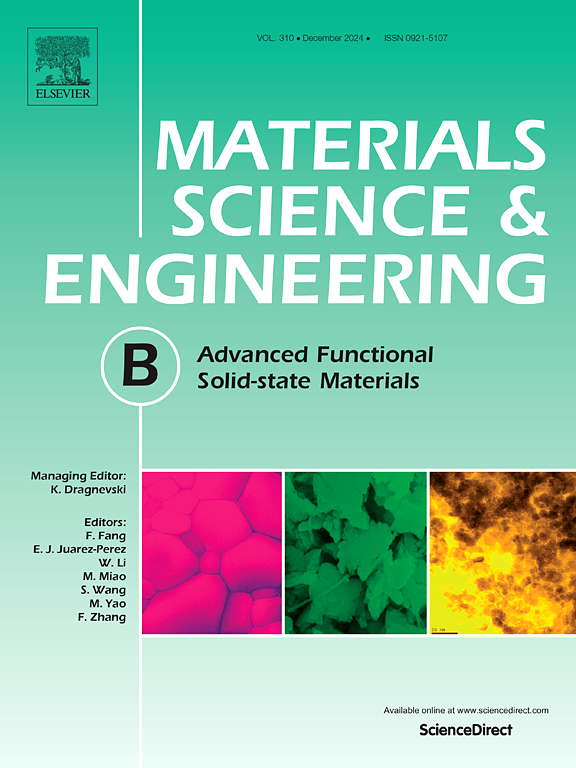揭示了La2Zr2O7在固体氧化物燃料电池中的导电性能
IF 3.9
3区 材料科学
Q2 MATERIALS SCIENCE, MULTIDISCIPLINARY
引用次数: 0
摘要
焦绿宝石型稀土陶瓷(A2B2O7)具有优异的氧离子导电性和低损耗储能能力,是储能和固体氧化物燃料电池(SOFC)应用的理想候选材料。本研究通过 WOWS(水-油-水表面活性剂辅助)溶胶-凝胶法合成了掺杂钆(Gd)的锆酸镧(La2-xGdxZr2O7),系统地研究了 Gd3+ 取代对结构、电学和介电性能的影响。X 射线衍射(XRD)分析表明,掺杂诱导了从焦绿宝石(Py,空间群 Fd3m)到萤石(F,Fm3m)对称性的相变,同时晶体尺寸(49 nm → 23 nm)和晶格常数(10.介电性能使用非线性修正德拜函数建模,显示了与麦克斯韦-瓦格纳界面极化一致的频率依赖性色散。掺钆的 La2Zr2O7 在高温(≥400 °C)条件下具有更强的相稳定性和导电性,这凸显了掺钆的 La2Zr2O7 作为中温 SOFC 电解质材料的潜力。本文章由计算机程序翻译,如有差异,请以英文原文为准。
Unveiling conductive properties of La2Zr2O7 for solid oxide fuel cell applications
Pyrochlore-type rare-earth ceramics (A2B2O7) are promising candidates for energy storage and solid oxide fuel cell (SOFC) applications owing to their exceptional oxygen ion conductivity and low-loss energy storage capabilities. In this study, gadolinium (Gd)-doped lanthanum zirconates (La2−xGdxZr2O7) were synthesized via the WOWS (water–oil-water surfactant-assisted) sol–gel method to systematically investigate the effects of Gd3+ substitution on structural, electrical, and dielectric properties. X-ray diffraction (XRD) analysis revealed a doping-induced phase transition from pyrochlore (Py, space group Fd3m) to fluorite (F, Fm3m) symmetry, accompanied by a reduction in crystallite size (49 nm → 23 nm) and lattice constant (10.85 Å → 10.44 Å), confirming significant structural distortion.
Dielectric properties were modeled using a non-linear modified Debye function, revealing frequency-dependent dispersion consistent with Maxwell-Wagner interfacial polarization. Enhanced phase stability and conductivity at elevated temperatures (≥400 °C) underscore the potential of Gd-doped La2Zr2O7 as an electrolyte material for intermediate-temperature SOFCs.
求助全文
通过发布文献求助,成功后即可免费获取论文全文。
去求助
来源期刊

Materials Science and Engineering: B
工程技术-材料科学:综合
CiteScore
5.60
自引率
2.80%
发文量
481
审稿时长
3.5 months
期刊介绍:
The journal provides an international medium for the publication of theoretical and experimental studies and reviews related to the electronic, electrochemical, ionic, magnetic, optical, and biosensing properties of solid state materials in bulk, thin film and particulate forms. Papers dealing with synthesis, processing, characterization, structure, physical properties and computational aspects of nano-crystalline, crystalline, amorphous and glassy forms of ceramics, semiconductors, layered insertion compounds, low-dimensional compounds and systems, fast-ion conductors, polymers and dielectrics are viewed as suitable for publication. Articles focused on nano-structured aspects of these advanced solid-state materials will also be considered suitable.
 求助内容:
求助内容: 应助结果提醒方式:
应助结果提醒方式:


